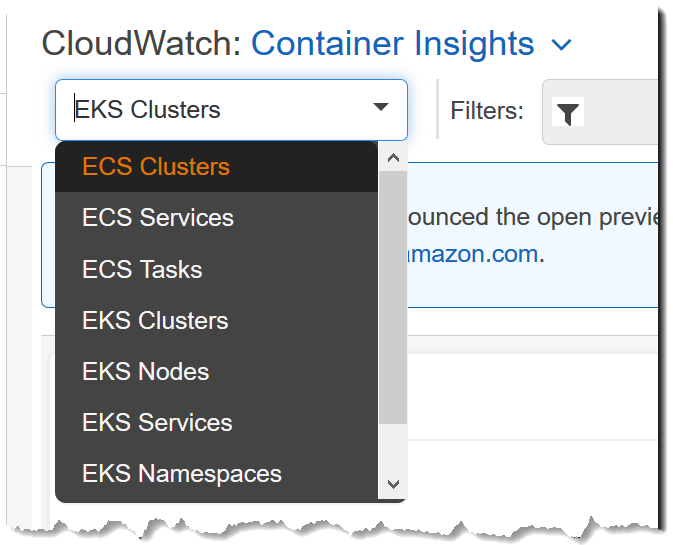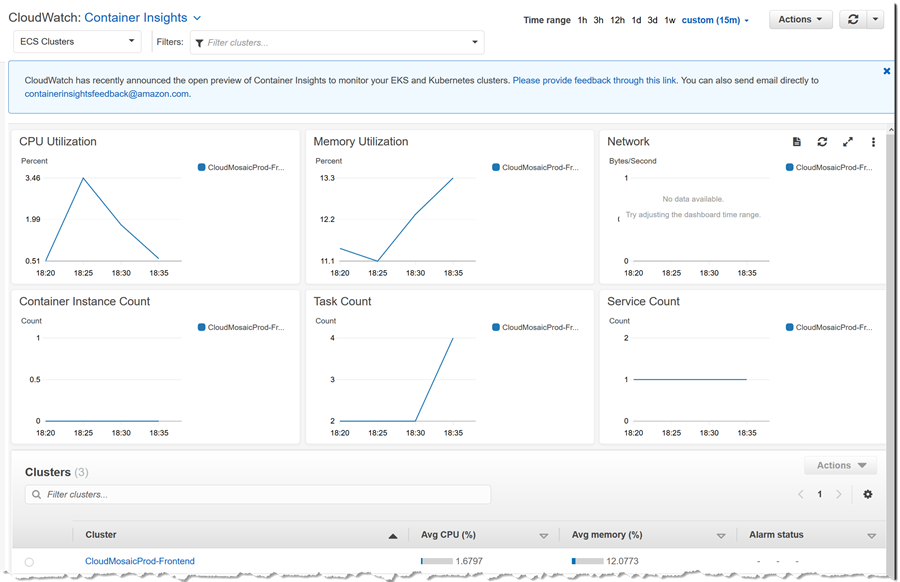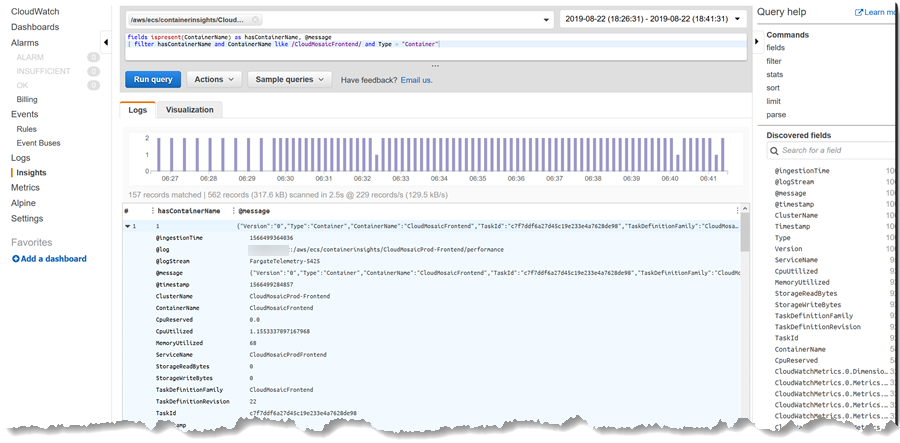AWS News Blog
Operational Insights for Containers and Containerized Applications
|
|
The increasing adoption of containerized applications and microservices also brings an increased burden for monitoring and management. Builders have an expectation of, and requirement for, the same level of monitoring as would be used with longer lived infrastructure such as Amazon Elastic Compute Cloud (Amazon EC2) instances. By contrast containers are relatively short-lived, and usually subject to continuous deployment. This can make it difficult to reliably collect monitoring data and to analyze performance or other issues, which in turn affects remediation time. In addition builders have to resort to a disparate collection of tools to perform this analysis and inspection, manually correlating context across a set of infrastructure and application metrics, logs, and other traces.
Announcing general availability of Amazon CloudWatch Container Insights
At the AWS Summit in New York this past July, Amazon CloudWatch Container Insights support for Amazon Elastic Container Service (Amazon ECS) and AWS Fargate was announced as an open preview for new clusters. Starting today Container Insights is generally available, with the added ability to now also monitor existing clusters. Immediate insights into compute utilization and failures for both new and existing cluster infrastructure and containerized applications can be easily obtained from container management services including Kubernetes, Amazon Elastic Kubernetes Service (Amazon EKS), Amazon Elastic Container Service (Amazon ECS), and AWS Fargate.
Once enabled Amazon CloudWatch discovers all of the running containers in a cluster and collects performance and operational data at every layer in the container stack. It also continuously monitors and updates as changes occur in the environment, simplifying the number of tools required to collect, monitor, act, and analyze container metrics and logs giving complete end to end visibility.
Being able to easily access this data means customers can shift focus to increased developer productivity and away from building mechanisms to curate and build dashboards.
Getting started with Amazon CloudWatch Container Insights
I can enable Container Insights by following the instructions in the documentation. Once enabled and new clusters launched, when I visit the CloudWatch console for my region I see a new option for Container Insights in the list of dashboards available to me.
Clicking this takes me to the relevant dashboard where I can select the container management service that hosts the clusters that I want to observe.
In the below image I have selected to view metrics for my ECS Clusters that are hosting a sample application I have deployed in AWS Fargate. I can examine the metrics for standard time periods such as 1 hour, 3 hours, etc but can also specify custom time periods. Here I am looking at the metrics for a custom time period of the past 15 minutes.
You can see that I can quickly gain operational oversight of the overall performance of the cluster. Clicking the cluster name takes me deeper to view the metrics for the tasks inside the cluster.
Selecting a container allows me to then dive into either AWS X-Ray traces or performance logs.
Selecting performance logs takes me to the Amazon CloudWatch Logs Insights page where I can run queries against the performance events collected for my container ecosystem (e.g., Container, Task/Pod, Cluster, etc.) that I can then use to troubleshoot and dive deeper.
Container Insights makes it easy for me to get started monitoring my containers and enables me to quickly drill down into performance metrics and log analytics without the need to build custom dashboards to curate data from multiple tools. Beyond monitoring and troubleshooting I can also use the data and dashboards Container Insights provides me to support other use cases such as capacity requirements and planning, by helping me understand compute utilization by Pod/Task, Container, and Service for example.
Availability
Amazon CloudWatch Container Insights is generally available today to customers in all public AWS regions where Amazon Elastic Kubernetes Service (Amazon EKS), Kubernetes, Amazon Elastic Container Service (Amazon ECS), and AWS Fargate are present.






